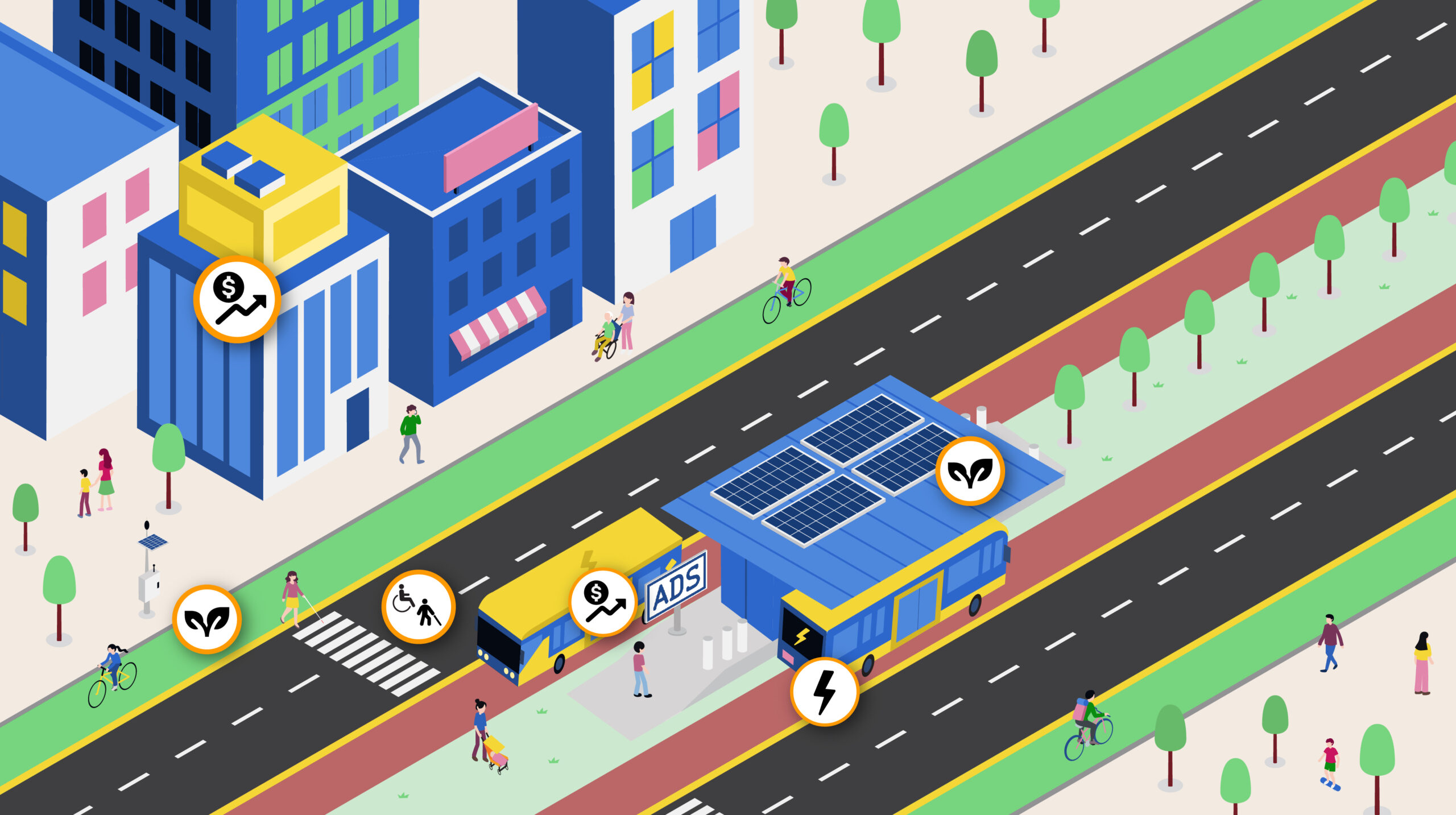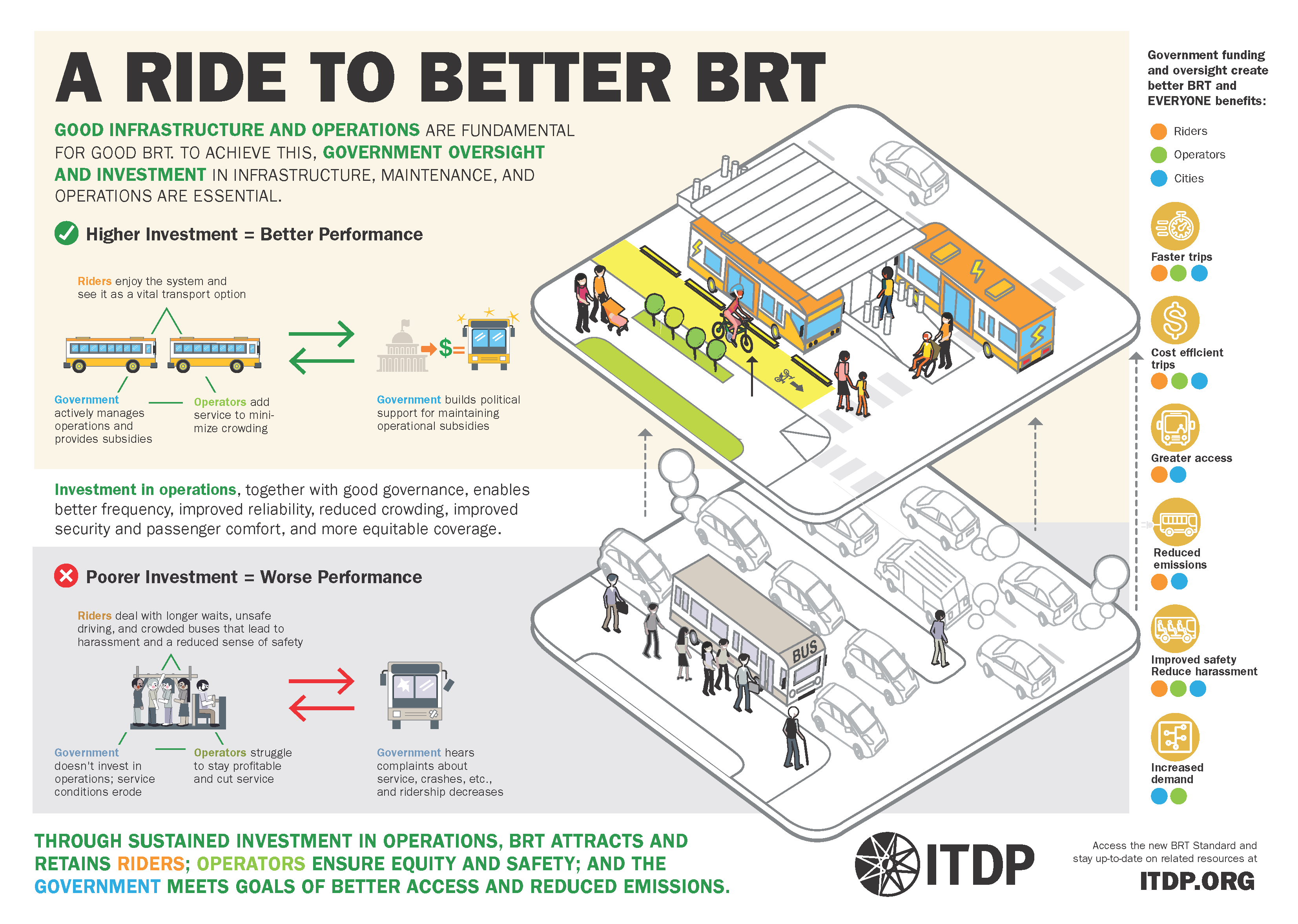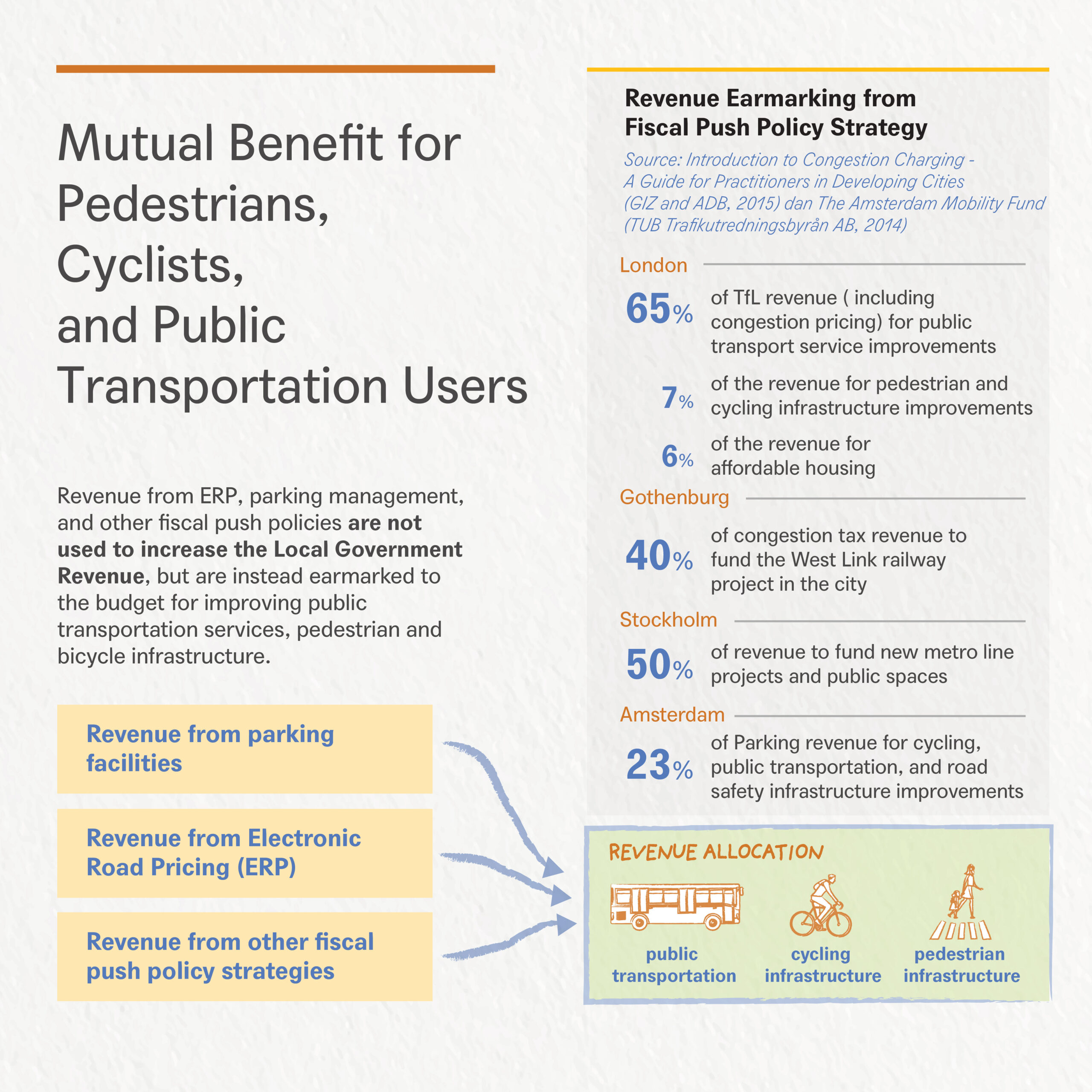August 05, 2024
Investing for Gold Standard BRT
By Gonggomtua Sitanggang, Southeast Asia Director ITDP

Since its introduction in 1974, Bus Rapid Transit (BRT) systems have been offering a compelling solution for urban mobility. It can deliver fast, high-quality, reliable, safe, and cost-effective services at relatively low cost. The system has been running and continues to develop over the globe. Currently, 5,842 km1 of BRT corridors are in operation, serving 31.6 million2 passengers per day. Like a city’s circulatory system, BRT keeps urban life flowing smoothly by fulfilling city’s transportation demands. Recognizing these benefits, more cities are embracing BRT to serve their populations, promoting reduced reliance on private vehicles and lower energy consumption.
To ensure the quality of BRT systems worldwide, the BRT Standard was introduced in 2012. The BRT Standard initiated by the Institute for Transportation and Development Policy (ITDP) is a tool for evaluating BRT worldwide concerning international best practices. The Standard, a Technical Committee and Supporting Institutions developed worldwide, establishes a standard definition of BRT and identifies best practices on design and operational aspects. In addition, the Standard serves as a scoring system that enables the evaluation and recognition of BRT corridors in terms of design and management excellence. In addition to providing an overview of BRT design elements, the Standard is also used to evaluate existing BRT corridors and rank them as Basic, Bronze, Silver, or Gold.
This year (2024), ITDP has updated the BRT standard which emphasizes three main topics: 1) expanded focus on gender, safety, and access; 2) attention on electrification, greening measures, and resiliency; and 3) a new focus on business operation.

The updated BRT Standard has reflected the importance of access for people with disabilities, women, and caregivers. Some elements have been adjusted to create equitable access and provide safety for all passengers. Adding greening measures and resiliency can improve community emergency preparedness, address climate change issues, and improve air quality, human well-being, and health. Another improvement is the addition of business operations focus which could encourage high-quality system operations and long-term sustainability.
Finding Alternative Revenue to Sustain Operations
Maintaining BRT operation to meet the standard while also developing the coverage requires significant funding. However, the government, which has the biggest capability on public transportation financing and funding, has limited capacity and several issues to be addressed in the certain period. For example, in the Transjakarta case, its operational expenses have increased by 40% per year3 while most of its revenue is sourced by government subsidies which have reached more than IDR 3 trillion (USD 185 million4) per year. The average farebox revenue only reached 14% of the total annual revenue in Transjakarta.
Looking into the future, the increasing cost to operate BRT will impact on the city’s budgeting. In some cases, the government may decide to cut the subsidy and shift the budget to other urgent matters or creating efficient and organized operations. Another straightforward solution is to increase passenger fares, but this may be unwise as it would directly impact vulnerable groups expenses who use public transportation day-to-day.
Currently, BRT and other public transportation operations primarily rely on farebox revenue or government subsidies, but this is not the only approach. BRT can leverage various funding and financing mechanisms to create a self-sustaining and well-maintained system.
One potential strategy is revenue earmarking. In Indonesia, the National Government has stipulated a mandate5 to the regional budgeting to earmark 10% of vehicle tax revenue for public transportation improvements.
Additional tax or retribution sources, like parking revenues in cities, can also be directed towards BRT enhancements or public transport services, in general. Furthermore, measures such as Low Emission Zones and Road Pricing can serve as alternative funding sources for BRT operations and improvements.

Private sector participation through Public-Private Partnerships (PPP) can significantly boost BRT revenue. For instance, utilizing station spaces for commercial advertisements or incorporating small retail areas within BRT stops can generate non-farebox revenue. More promisingly, value capture financing around BRT stations can be applied. This method, used in railway public transportation investments, can also be used in the BRT systems. BRT’s flexible and efficient infrastructure enhances accessibility to nearby areas, increasing surrounding land values. This rise in land value can be captured through taxes or development compensation, providing funds for operating, maintaining, and improving the BRT system.
Achieving Gold Standard BRT
The BRT standard has defined measures to improve the reliability and efficiency of BRT systems and provide a reduction rate due to poor operations. Gold standard BRT is about more than standardization criteria and ensuring that the BRT system will not suffer from overcrowding, complex passenger transfers, and infrequent bus frequencies. While the investment required may seem high, the long-term benefits are equally high. To support this transition, cities can explore innovative financing models, such as PPP and land value capture near BRT stations. Hence, when a city invests in the BRT Gold Standard, it unlocks the potential for BRT to become the city’s economic engine by having efficient public transportation to attract businesses and residents, stimulate the development of green corridors and urban regeneration, and, ultimately, reduce traffic congestion.
